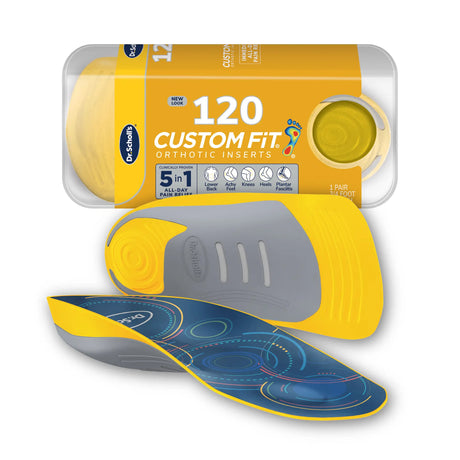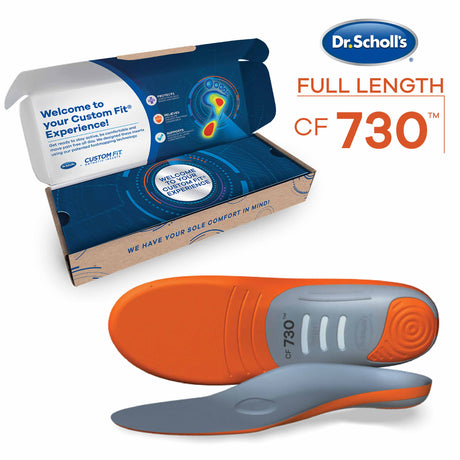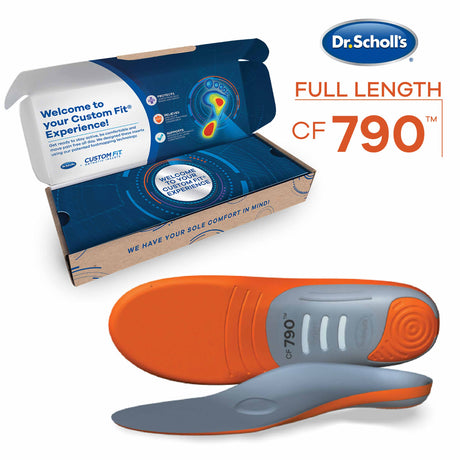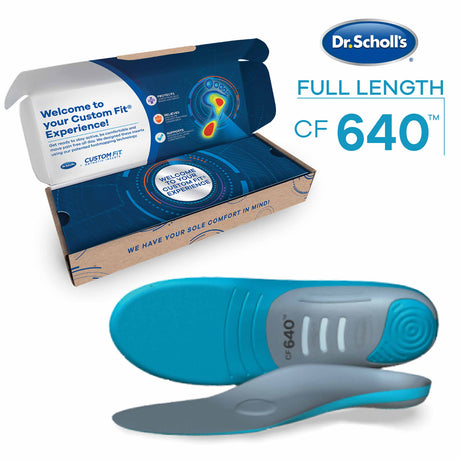Heel Pain FAQs
Economy shipping is FREE for orders over $25+!

There are many different potential causes of heel pain. Some of the most common causes include:
There is no way to cure heel pain fast. Some types of heel pain may improve or even completely resolve within a few weeks with rest and at-home therapies, such as icing and over-the-counter NSAIDs (non-steroidal anti-inflammatory drugs). In other cases, heel pain may require more healing time in addition to medical intervention. See your doctor if your pain is severe, or if it occurred suddenly. Successfully curing heal pain may require a proper evaluation and diagnosis from a healthcare provider. If prescription medications or clinical procedures are recommended, it’s important to adhere to your treatment plan for the best possible outcome.
There are a number of ways to help relieve heel pain, depending on the cause and degree of the pain. If you’re unsure of what’s causing your pain, and it’s severe or came on suddenly, see your doctor. Some cases of heel pain are due to a serious injury, which may require medical attention. For mild to moderate heel pain, consider these tips based on the following conditions:
• Plantar warts — If you have heel pain due to plantar warts, over-the-counter treatment products can help eliminate them while minimizing painful pressure. Dr. Scholl’s® Plantar Wart Remover with Hydrogel Technology features medicated discs to remove warts along with hydrogel bandages for pain relief.
• Athlete’s foot — If you have heel pain from athlete’s foot, treat the infection with an over-the-counter antifungal medication. Dr. Scholl’s Instant Cool Athlete’s Foot Treatment Spray clears up fungal infections with the medication tolnaftate. The treatment spray also alleviates painful itching and burning with cooling menthol.
• Plantar fasciitis and heel spurs — Pain associated with plantar fasciitis and heel spurs often resolves with at-home remedies. These include over-the-counter pain relievers, icing and rest. You might also try using orthotics. Dr. Scholl’s® Plantar Fasciitis All-Day Pain Relief Orthotics are designed to ease pressure on tender heels. They can even help reduce pain that occurs first thing in the morning upon rising, which is typical with heel spurs and plantar fasciitis.
• Long hours on the feet — If you experience general sore soles from long days spent on your feet, consider specialty orthotics. Dr. Scholl’s® Revitalize Recovery Insoles feature massaging nodules and targeted stimulating bubbles improve blood flow to improve circulation and speed recovery.
• Arthritis — If you have heel pain from arthritis, there are a number of self-care remedies and over-the-counter products that may be helpful. Rest and icing can help ease pain and inflammation. Oral NSAIDs (non-steroidal anti-inflammatory drugs), such as ibuprofen, aspirin and naproxen, can also reduce arthritis pain the heel. Dr. Scholl’s® Arthritis Support Insoles Pain can help alleviate osteoarthritis pain in the feet, including the heel. If heel pain from arthritis is severe, see your doctor. There are prescription treatments and medical procedures that may be helpful, such as cortisone injections, and prescription NSAIDs and pain relievers.
• Achilles tendinitis — Heel pain from Achilles tendinitis often improves with rest, ice and over-the-counter pain relievers. You might also try shoe inserts, such as heel cushions, that elevate the heel area to redirect pressure away from the Achilles tendon. Dr. Scholl’s® Comfort Heel Cushions absorb shock and reduce stress on the heel area. The slim design allows for an easy fit in most types of shoes.
If you have heel pain that’s severe or comes on suddenly, see your doctor. They can evaluate your condition, order any necessary tests and recommend treatment options.
Heel pain should always be taken seriously. However, many cases of mild and moderate heel pain can be managed at home with lifestyle changes and at-home remedies, such as icing, rest, over-the-counter pain relievers and shoe inserts. See your doctor if your pain doesn’t improve after two or three weeks despite trying these remedies.
If your pain comes on suddenly, or it’s severe, see your doctor. Certain injuries and health conditions can cause heel pain, and treatment under a doctor’s supervision may be necessary.
How long heel pain lasts depends on the cause of the pain as well as the severity of the condition, your overall health and recovery efforts. Heel pain from chronic conditions, such as arthritis, may require ongoing pain management.
• Heel pain from bursitis typically improves within a few weeks if treated promptly.
• It usually takes several months for the pain from Achilles tendinitis or an Achilles tendon rupture to resolve.
• With plantar fasciitis and heel spurs, some people feel an improvement after just a few weeks with appropriate treatment. However, some people find that it takes up to a year for the pain to fully resolve.
• Pain from a stress fracture of the heel bone (calcaneal stress fracture) usually resolves in two to three months with proper treatment.
Recovery time depends largely on how well you adhere to your treatment plan. If you’re being treated by a doctor, it’s important to follow your doctor’s treatment instructions carefully. Take any medications as instructed and comply with all recommendations.
Heel pain is a common issue with many potential causes. It’s important to see your doctor if you have pain in the heel area since it may be due to an injury or condition requiring medical treatment. Mild to moderate heel pain can often be addressed with lifestyle changes and home remedies, such as rest and icing. Over-the-counter medications, such as ibuprofen and naproxen, can also reduce heel pain. Wearing supportive shoes with orthotics is another way to minimize heel pain and protect the feet from stress, which can lead to further issues.
Dr. Scholl’s offers several types of orthotics that can help address heel pain. These include:
Heel pain can be disabling and negatively impact quality of life. However, there are many ways to manage heel pain with the help of lifestyle changes and home remedies. When used with high quality, supportive shoes, specialty orthotics from Dr. Scholl’s can help reduce heel pain and allow you to enjoy your normal activities. See your doctor if your pain is severe, or if it doesn’t improve with self-care measures.














































